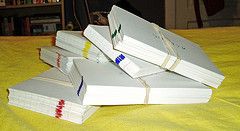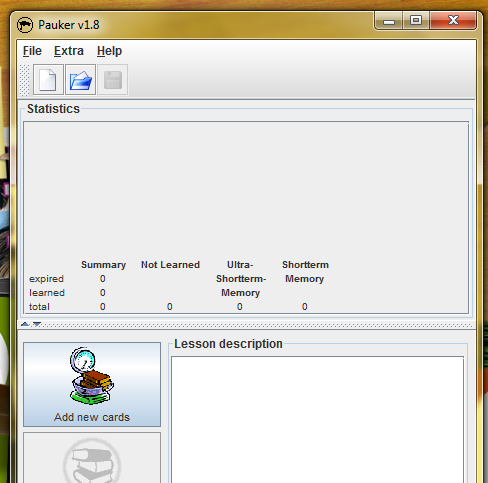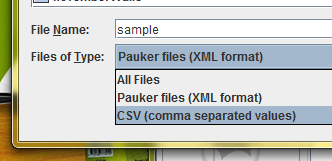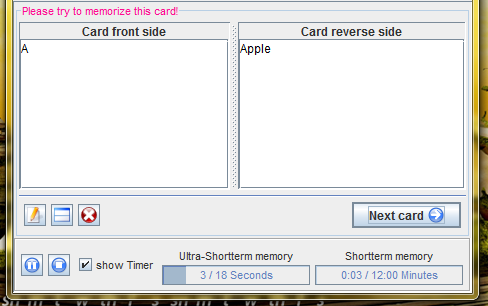As you might be aware, flashcards are a set of cards which generally have a question on one side and the answer on the reverse. You read the question, try to remember the answer and then flip sides to reveal the answer. Repeating the same process over and over again helps in memorizing.
Flash cards have been used to learn foreign languages, improve vocabulary or learn just about anything that can be written in a question and answer form. Using physical flash cards, you have to create cards; manage them and then keep track of which ones you have learnt and which ones are yet to be learnt. Using a computer-based freeware flash card program, you can leave all that to the software and concentrate on the learning. Pauker is one such Java-based flash card software.
Being a Java application you can run it on Windows, Linux and Mac. Pauker can be found here. The Pauker site recommends that you use Pauker via Java webstart. However, you can also download and run the freeware flash card program. Pauker doesn't require installation and works as it is. Of course you would need Java on your computer.
On the first run, the application looks like above. You would first need to create flash cards to use with the application. Enter a description for the lesson and click Add new cards. You can now create new cards. The dialog that opens lets you enter the contents of the flash card and allows for basic formatting as well.
If typing the content seems tedious, you can also import cards into Pauker. Pauker can import from CSV or Pauker XML files. To import existing cards; click on Open, choose the appropriate format and then browse to the required CSV or XML file. Pauker will import the flash cards contained in the file and create a new lesson for you. You can also download ready-made flash cards from the site if they fit your need.
If you can do without formatting to aid your learning, there is quicker way to create flash cards. Choose Text import from under the file menu and type or paste the text that you want to convert to flash cards. The front and reverse text of the cards should be present on separate lines for the cards to be created correctly.
So much for creating flash cards. Next up is the all-important task of learning and then mastering the cards. Choose one of the lessons you created above and then click Learn new cards. A new window opens which looks the one shown below.
This is how it works: Two timers are displayed at the bottom of the window. One is aimed at Ultra-short term memory, while the other is aimed at short term memory. While the first timer is active, try to go through as many cards as possible. Just a quick read and move to next, don't worry if you don't get everything. When the first timer is up, Pauker activates the short term memory timer.
Here, the same cards are flashed but the reverse side is hidden. You have to recall the reverse side and interact with the application. If you remember the reverse side, seeing it again will further strengthen it in your memory. If you don't remember, you should take a few seconds and try to commit the reverse side to memory.
After the second timer expires, Pauker begins with the real test. If you answer a card correctly now, it is moved to completed state meaning that you have memorized it. For the ones that you answer incorrectly, the above process is repeated untill you have learnt them all. At any time, your progress is represented in the form of bar graphs which displays the number of cards which are not learnt, committed to ultra short term memory, committed to short term memory and number of cards that have been learnt.
Pauker offers learning by typing and learning by remembering modes. You have to type the answer in the former. In the latter however, you have to tell Pauker whether you remembered the reverse side or not. You can customize the time for both the timers and learning strategies which govern how expired and forgotten cards are presented to you again.
Pauker does majority of heavy lifting when using flash cards. You can also find MiniPauker which is Pauker for mobile devices which support Java applications.
Do you use computer-based flash cards for committing things to memory? What are your favorite freeware flash card programs?






